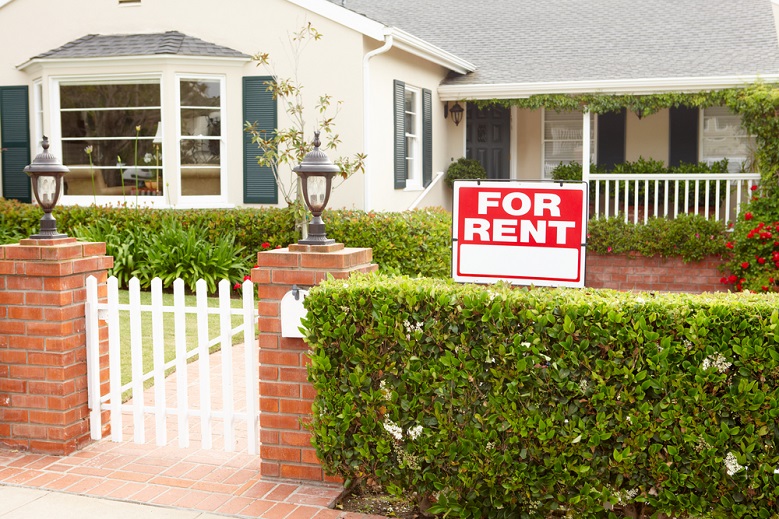
By Ethan Roberts
Investors sometimes ask me whether it makes sense to buy rental property in a city or state that’s different from where they live. Often, they’re curious about exploring other areas because there are few good deals left where they live, or they’ve heard that certain towns in other states are booming.
During the peak real estate years of 2003–2007, investors from as far away as California were calling Realtors in states like Arizona, Georgia, and Florida, to snap up investment properties—often without even seeing the homes in person! That was crazy investing then, and it’s just as reckless now. As it turned out, that kind of blind fervor for real estate investing portended an end to the bubble.
However, that doesn’t mean investors shouldn’t buy out-of-town or out-of-state properties today. You just have to be prudent and take certain precautions.
Why be a Long-Distance Landlord?
There are pros and cons inherent with long-distance real estate investing. Let’s take a look at the pros first:
1. You have the freedom to invest in more affordable areas. By not restricting yourself to the area in which you live, you open up a whole new world of investing possibilities. Many investors in high-cost-of-living states like New York, California, and Massachusetts can no longer afford to buy homes where they live, but are finding the Midwest and Southern states to be much more affordable. In addition to cheaper sales prices, these areas also have lower taxes and dwelling (i.e. rental property) insurance premiums.
2. You can fund your future retirement home. Some investors buy a home in a retirement town with an eye toward living there one day. They may buy a condo near the beach, or a country cabin in the mountains. Then they rent the home out with either short- or long-term leases, and in the process, their tenants pay down the loan principal until the investor is ready to retire. By then, the mortgage might be fully paid off.
3. You may gain new tax deductions. Many parents have children who attend college in another state. Instead of spending a fortune on a dorm room and semi-annual visits, they buy a modest three-bedroom home near campus. The student lives in this home and rents the other two bedrooms to some friends. The parents save on dorm fees and offset a good part of the total mortgage payment with the rent collected from the other students (or better yet, their parents). Furthermore, each time that the parents travel to visit the child, 50% of their total trip expenses can be legally written off on their income taxes because they’re also inspecting their property!
Handling the Disadvantages of Long-Distance Real Estate Investing
Make no mistake: owning rental property far from home can be a complex undertaking. There are several challenges long-distance landlords often encounter:
- Lack of knowledge about the area in which they’re investing
- Lack of familiarity with good local service providers
- Relying on others to take care of day-to-day problems or repairs
- Difficulties in getting the rent paid on time.
But these obstacles don’t have to prevent you from purchasing long-distance rental property. Here are some ways to make your investment a success.
1. Do your homework and learn about the area. Begin by hiring a good Realtor from the area you’re interested in. You can browse websites such as Realtor.com, Zillow.com, or Trulia.com to get the names of several Realtors in the area who regularly sell investment properties. Interview each Realtor by phone, and ask those you like best to send you listings of homes for sale that meet your criteria. Browse rental properties online to get a feel for the return that you can expect on homes in your price range.
Once you’ve selected a Realtor, plan to visit the area and view properties together. Desirable, modestly priced homes sell quickly, so a home that interests you on Tuesday could have a contract on it by the time you arrive on Saturday. You’ll want to create a list of eight to 10 homes to tour.
Because there are more expenses involved in buying and managing long-distance real estate—such as the travel expenses you’ll incur to visit the property—don’t rule out foreclosures, short sales, and other distressed properties that can be purchased at a substantial discount to comparable homes in the area. This type of home probably won’t be move-in ready, but after you make the necessary improvements, it should yield some start-up or “sweat” equity.
2. Develop a go-to list of local service providers. Ask your Realtor for the names of service providers—like plumbers, electricians, and handymen—with good reputations that you can depend on for ongoing property maintenance. Try to use smaller “Mom-and-Pop” companies; they often have better pricing and tend to be more honest about the actual repairs needed. Larger companies have been known to tell long-distance landlords that they need a whole new water heater, AC unit, or roof, when less expensive repairs or replacements might have done just fine.
If possible, you’ll want to contact the recommended service providers before you close, introduce yourself, and tell them you’d like to use their services for your investment property. Be sure to ask what forms of payment they accept, as most service providers like to be paid when they finish the job.
3. Manage the property yourself. It’s not very difficult to make the necessary calls as problems arise, but if you find that landlord duties such as managing repairs and collecting rents is becoming too stressful, ask your Realtor if his or her company provides property management services. The monthly fee for property management will range from 10%–12% of the rent.
4. Automate or simplify rent collection. There are a couple of ways to handle collecting rents on time. Some tenants can have their rent automatically deposited into your bank account. I have two Navy tenants who have the rent deducted from their pay on the first of the month and immediately deposited to my account. Most banks let you transfer money online between accounts as well.
You can also have tenants deposit the money into an account at a local bank—you’ll get the rent faster than if they mailed you a check. To encourage timely payment, send them an email or text reminder as the first of the month approaches.
Once you’ve rehabbed the property and your tenants are in place, your rental should run on autopilot for quite awhile. If your tenant calls with an occasional repair problem, you can simply pick up the phone and contact one of the service providers on your list.
In sum, there are many advantages to buying long-distance real estate, and while there are some disadvantages, they can be easily handled if you’ve done your initial research and set up a network of reliable resources.
Search Foreclosure and Bank-owned Homes

